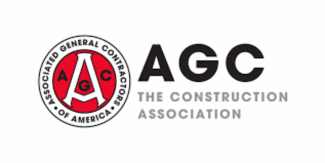The Associated General Contractors of America released an analysis of federal spending data, which showed total construction spending rose by 0.5 percent in June.
The increases were in both residential and nonresidential construction segments, which the Association officials noted took place as spending on highway and street projects decreased. They also said confusion around issues like Buy America rules obstructed activity on many projects.
“Despite high-interest rates, private sector demand for most types of construction activity continues to expand,” said AGC Chief Executive Officer Stephen E. Sandherr. “Ironically, demand softened in sectors like power and highway and street construction, where Washington has directed significant sums.”
The report showed construction spending without the inclusion of inflation equaled $1.938 trillion, at a seasonally changed rate in June. This is a 0.5 percent increase compared to the May rate, which was adjusted upward from the initial estimate. Spending on private residential construction climbed up for the second month in a row in June by 0.9 percent. Spending on private nonresidential construction was flat in June, however public construction investment increased 0.3 percent.
In non-residential segments, commercial construction consisting of warehouse, retail and farm construction, increased by 0.1 percent in June compared to the previous month. Spending on manufacturing plants rose 0.3 percent between May and June. In terms of office construction, it increased by 0.7 percent. The data revealed educational construction grew by 0.1 percent compared to the month before. Spending on power construction decreased by 1.3 percent for June, and highway and street construction also dropped by 0.1 percent compared to May.
Residential spending increased by 0.9 percent from May to June. Single-family homebuilding was responsible for most of the growth and expanded by 2.1 percent for the month. New multi-family construction also rose by 1.5 percent compared to May.
“Confusion about some of the strings that come with the new federal construction funds is limiting the economic impact of these investments for now,” Sandherr said. “The sooner the administration clarifies questions around Buy America and the rules around clean energy investments, the sooner construction can begin on many infrastructure and power projects across the country.”
